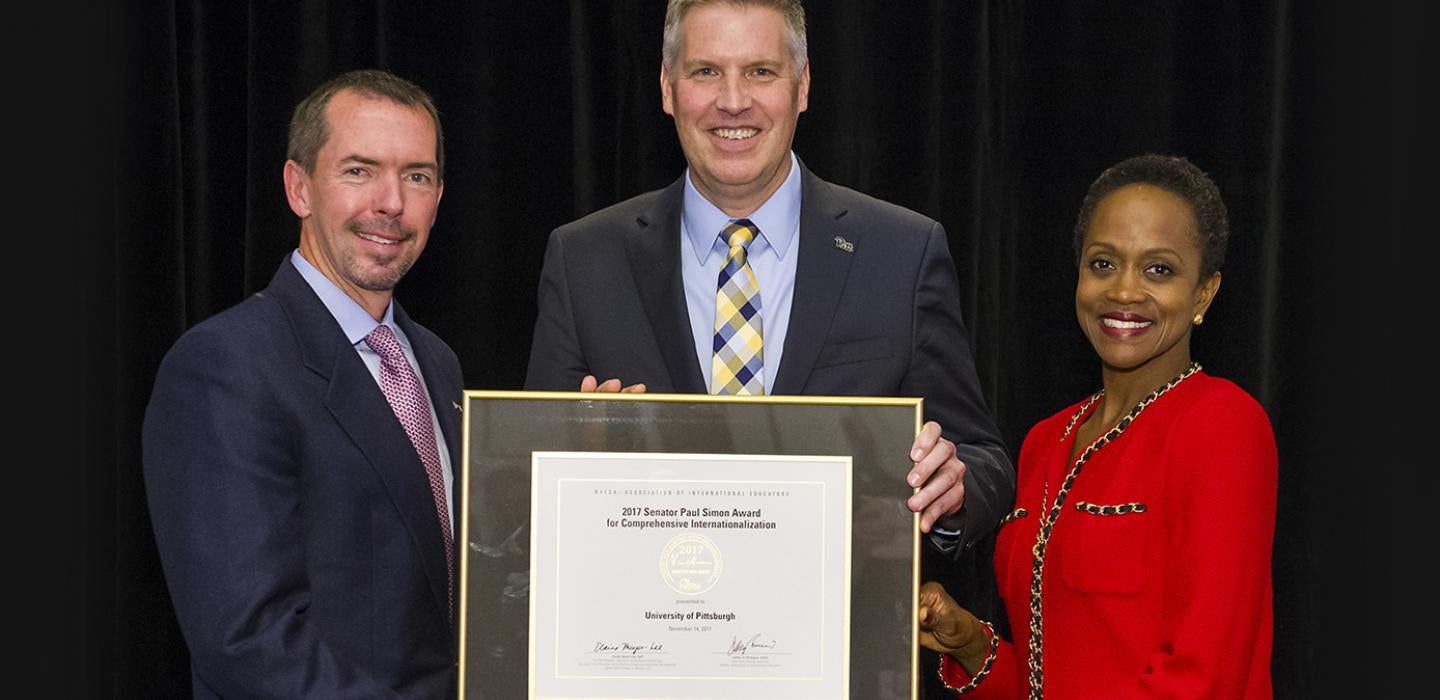
Subscribe to Pittwire Today
Get the most interesting and important stories from the University of Pittsburgh.At a time when the number of students traveling abroad for college continues to increase, experts cite the University of Pittsburgh as a top creative and innovative force in global education.
Pitt Chancellor Patrick Gallagher was one of five university panelists for a Washington, D.C., forum hosted by NAFSA, the Association of International Educators, last month. The panelists presented to an audience of about 100 senior international education leaders, alumni and other representatives of the universities and federal government representatives. Pitt also was one of four universities that NAFSA honored earlier this year with its 2017 Senator Paul Simon Award for Comprehensive Internationalization, leading to a spot on the forum’s panel.
“If a university seeks to be at the forefront of human knowledge, if it’s trying to attract the most talented people and then put them in a community and expand that boundary of knowledge and create opportunity, then anything less than a global perspective is a limitation on that mission,” said Gallagher during the forum.
November also brought the release of “2017 Open Doors Report on International Educational Exchange,” a report by the Institute of International Education, Inc., and the U.S. Department of State Bureau of Educational and Cultural Affairs. The data showed that over the prior year, the number of international students in the United States increased by 3 percent and the number of American students studying abroad increased by 4 percent. In 2016-17, for the second consecutive year, U.S. colleges and universities hosted more than 1 million international students, reaching a record high of 1.08 million.
Pitt currently has 3,236 international students on campus, and its Study Abroad program attracted more than 1,900 students in the 2015-16 year. Those students and programming are a vital part of Embracing the World: A Global Plan for Pitt.
During the forum, Gallagher explained that Pitt’s overall mission is to make the world better through knowledge, and that when developing the global plan, he sought out opinions by talking to the University’s key stakeholders.
“We went to the faculty and students to ask them how we should advance this goal of a global perspective in our teaching, research, student experience and impact,” he said. “It came down to a simple idea – Pitt to the World and the World to Pitt.”
Gallagher also discussed the University Center for International Studies and its four national resource centers – the Center for Latin American Studies, the Center for Russian and East European Studies, the European Studies Center and the Global Studies Center. He called them “foundational to our effort,” pointing out they bring together international and global studies, research and new courses and are connected to Pitt’s core values.
“Our international studies programs, because they tie directly with our academic mission and bring all of our schools and departments into play, really do provide us with a home base for our global efforts,” he said.
Gallagher praised Pitt’s joint institute – the Sichuan University-Pittsburgh Institute, that allows engineering students to complete their degree in both Chengdu and Pittsburgh. Students from China spend the first two years of the program immersed in the Pitt curriculum in China with the option of transferring to the Pittsburgh campus for their third year.
“It allows the institute in Chengdu to showcase this Western-style teaching,” he said. “It’s global from both directions.”


